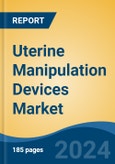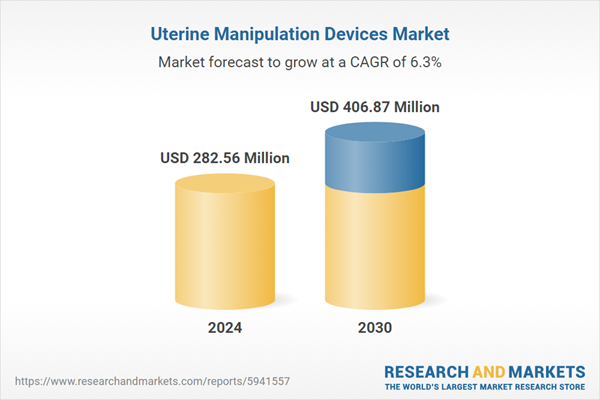Total Laparoscopy Hysterectomy is the fastest growing segment, North America is the largest market globally
Speak directly to the analyst to clarify any post sales queries you may have.
10% Free customizationThis report comes with 10% free customization, enabling you to add data that meets your specific business needs.
Key Market Drivers
The increasing adoption of minimally invasive gynecological surgeries is a primary driver for the Global Uterine Manipulation Devices Market. These procedures are highly valued for their reduced patient trauma, shorter recovery times, and lower complication rates compared to traditional open surgeries. Uterine manipulation devices are essential in these settings, enabling surgeons with enhanced control and visualization for operations like laparoscopic hysterectomies and myomectomies. According to Medscape, in April 2023, robotic-assisted laparoscopic hysterectomy constituted 65.8% of total hysterectomy surgeries, reflecting a significant procedural shift towards advanced minimally invasive techniques.Key Market Challenges
The primary impediment to the expansion of the Global Uterine Manipulation Devices Market is the substantial cost associated with these advanced surgical instruments. These high expenses present a significant financial barrier for numerous healthcare facilities, particularly in developing regions, where budget allocations for medical equipment are frequently constrained. This directly limits the acquisition and widespread adoption of these devices, despite the recognized benefits of minimally invasive gynecological procedures they enable.Key Market Trends
The integration of digital and AI-powered surgical platforms is a significant trend transforming the Global Uterine Manipulation Devices Market by enhancing procedural precision and efficiency. These advanced systems provide surgeons with data-driven insights, real-time guidance, and optimized workflows, improving decision-making during complex gynecological procedures. According to MedTech Europe, the European medical technology market was estimated to be roughly €170 billion in 2024, reflecting a substantial base for digital innovation within the healthcare sector. This progression is further exemplified by companies like Medtronic, which introduced new AI algorithms for post-operative analysis in laparoscopic and robotic-assisted surgery in April 2024, offering enhanced surgical insights and training opportunities.Key Market Players Profiled:
- Conkin Surgical Instrument Ltd.
- Johnson & Johnson Services, Inc.
- CooperSurgical, Inc.
- B. Braun SE
- KARL STORZ GmbH & Co. KG
- CONMED Corporation
- RUDOLF Medical GmbH + Co. KG
- LiNA Medical ApS
- Richard Wolf GmbH
- Utah Medical Products, Inc.
Report Scope:
In this report, the Global Uterine Manipulation Devices Market has been segmented into the following categories:By Application:
- Total Laparoscopy Hysterectomy
- Laparoscopic Supracervical Hysterectomy
- Laparoscopically Assisted Vaginal Hysterectomy
- Sacrocolpopexy
- Others
By End User:
- Hospitals & Clinics
- Ambulatory Surgical Centers
- Others
By Region:
- North America
- Europe
- Asia Pacific
- South America
- Middle East & Africa
Competitive Landscape
Company Profiles: Detailed analysis of the major companies present in the Global Uterine Manipulation Devices Market.Available Customizations:
With the given market data, the publisher offers customizations according to a company's specific needs. The following customization options are available for the report:- Detailed analysis and profiling of additional market players (up to five).
This product will be delivered within 1-3 business days.
Table of Contents
Companies Mentioned
- Conkin Surgical Instrument Ltd.
- Johnson & Johnson Services, Inc.
- CooperSurgical, Inc.
- B. Braun SE
- KARL STORZ GmbH & Co. KG
- CONMED Corporation
- RUDOLF Medical GmbH + Co. KG
- LiNA Medical ApS
- Richard Wolf GmbH
- Utah Medical Products, Inc.
Table Information
| Report Attribute | Details |
|---|---|
| No. of Pages | 182 |
| Published | November 2025 |
| Forecast Period | 2024 - 2030 |
| Estimated Market Value ( USD | $ 282.56 Million |
| Forecasted Market Value ( USD | $ 406.87 Million |
| Compound Annual Growth Rate | 6.2% |
| Regions Covered | Global |
| No. of Companies Mentioned | 10 |









